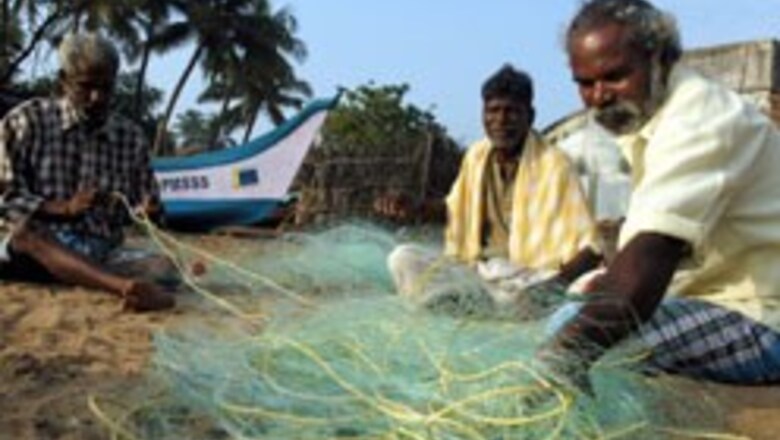
views
Chennai: A young man holds the hand of a little boy, looking at a row of new houses glistening in the morning sun. The area was in wreck two years ago, washed away by the devastating tsunami.
But Angalamman Kuppam village is exuding life now. Along the innocent-looking silver beaches about 80 km south of Chennai, new casurina saplings are knee high and men are back to weaving nets.
In 1983, the young man was a puny, dehydrated child, abandoned in a cinema hall and brought by a rickshaw puller to Vidyaakar, the founder of 'Udavum Karangal' (Helping Hand), one of Chennai's largest rescue and rehabilitation institutions.
'Udavum Karangal' has built 72 houses in the village, which it has adopted.
"The tsunami relief work is just an extension of what we are doing," says Vidyaakar.
That comment perhaps typically symbolises all that has happened to the Tamil Nadu coast since the tsunami struck, leaving more than 230,000 people homeless and without livelihood.
SNEHA is another group that has been active in coastal Tamil Nadu, helping in adoption and orphan care after the tsunami. It has also stopped child trafficking.
"As many as 500 NGOs had jumped into tsunami relief in the aftermath, but now only about 50 are left," says Ram Mohan of the NGO Coordination And Resource Centre.
Companies like Wipro, along with the BITStsunami (Birla Institute of Technology) Trust, planted 174,422 saplings (the number of people lost in the December 2004 tsunami worldwide) as bio-shield along the coast in 2005, as did several NGOs.
Most of the plantations are thriving.
At the Point Calimere sanctuary in Nagapattinam, 450 km from here, the numbers of blackbuck have gone up and the flamingoes are back.
Today, Devanapattinam, a fishing hamlet on the Cuddalore coast and also one of the most devastated, is humming with activity. There are new parks, new schools, new bridges and boats.
PAGE_BREAK
"You have to see it to believe it," says Gagandeep Singh, the administrator in the district, 350 km from here.
Nearly 30,000 catamarans and fishing boats in the state have been replaced or repaired by the government and NGOs.
At least half a dozen women who lost their children in the disaster and had undergone family planning procedures earlier have reversed the process medically and given birth.
But a lot still needs to be done.
According to the government, 7,996 people died in Tamil Nadu in the tsunami. NGOs say about 11,000 died along the 1,000-km coast and nearly 900 are on the missing list. The worst hit was Nagapattinam coast.
The government has issued more than a hundred orders related to tsunami relief since January 2005 and dedicated Rs.11.32 billion for rehabilitation. The government says relief has reached 150,000 people.
There are three major ongoing externally aided projects: the Asian Development Bank has a $143.75 million tsunami emergency assistance project in the 13 coastal districts, the World Bank has a $423 million emergency tsunami reconstruction project to repair houses and the International Fund of Agricultural Development has invested $30 million for long-term rehabilitation.
Besides, Rs.230 million has come from the MPLAD quota (Parliament members' funds) of which only about Rs.70 million has been used for just 48 of the 173 projects.
The government had promised to build 50,000 temporary shelters for people whose homes were destroyed and NGOs said they would build another 50,000. But the work done is far less. The government claims it put up 14,000 temporary shelters and NGOs say they put up about 15,000 such huts.
The government says it gave Rs.400 million for temporary shelters. But temporary settlements like Kannagi Nagar in Chennai's IT corridor, housing 700-odd families resettled in marshland, were completely washed out in the November 2005 rains and questions are being asked as to where the money went.
The government put the need for permanent housing for tsunami victims at 54,000 homes and approved Rs.460 million to acquire land for this.
The government admits that only about 16,500 permanent houses have been completed in the state, that too with the combined efforts of NGOs and the authorities.
In Nagapattinam, some 18,000 houses are required but only about 3,000 have been readied, says T S Jawahar, the district administrator.
















Comments
0 comment